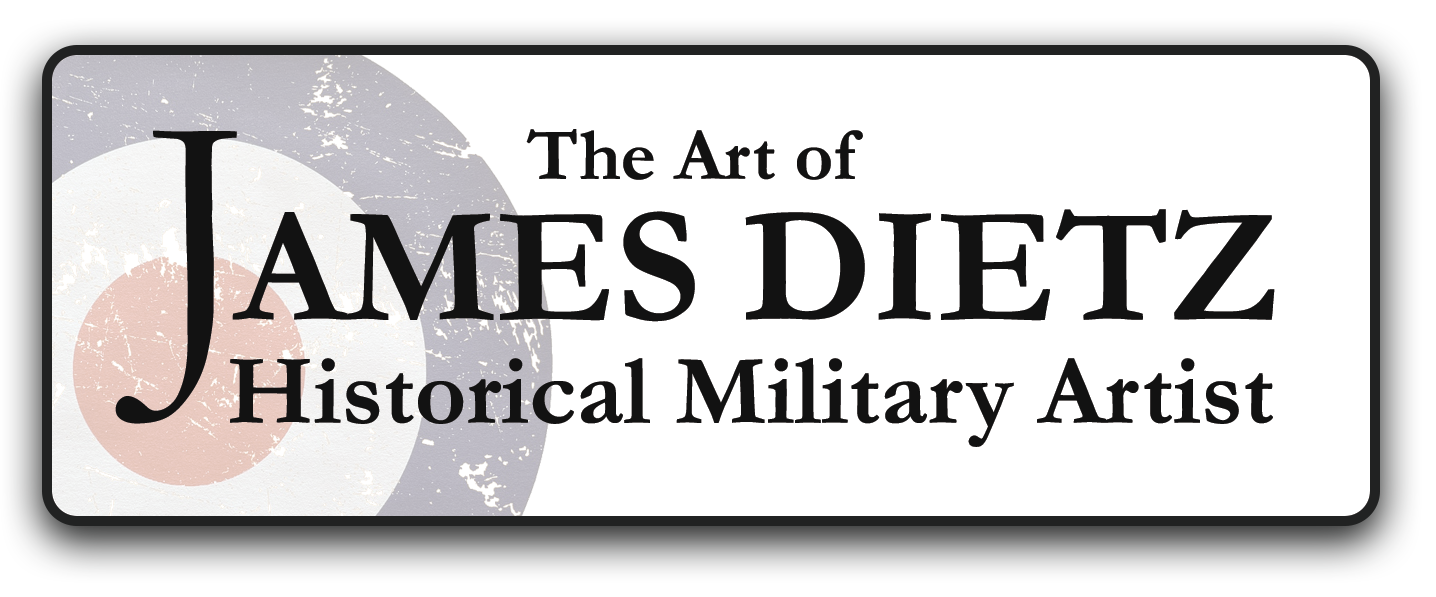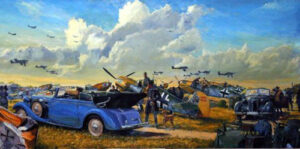Description
Image Size: 15" x 25"
400 Military Edition (Limited Edition, Signed and Numbered)
250 Publisher Proof Edition (Limited Edition, Signed and Numbered)
100 Artist Proof Edition (Limited Edition, Signed and Numbered)
June 6-7, 1944 saw the execution of operation Neptune, the airborne assault of Hitler's Atlantic Wall. Arriving by glider and parachute, three allied airborne divisions, the U.S 82nd, 101st and British 2nd landed on the Cherbourg Peninsula to secure inland routes in preparation for the Allies' massive Normandy assault. Spearheading the assault, units of the 82nd Airborne Division were to land astride the Merdert River and seize the approach roads to Utah beach.
The 325th Glider Infantry Regiment (GIR) arriving by sea and air, constituted the 82nd Division's reserve. Commanded by COL Harry L. Lewis, the 325th GIR was ordered to conduct their assault on the morning of D+1 and link up with parachute infantry elements that had arrived on D-Day. Initial intelligence reports given to COL Lewis prior to the invasion indicated enemy forces to be located to the South of the Regiment's landing zone, Landing Zone W (LZ Whiskey).
The enemy situation changed however, as the 325th GIR prepared to leave their departure airfields in England. Elements of the 505th Parachute Infantry Regiment (PIR) had met stiff resistance in their fight for Ste. Mere Eglise, and enemy forces still controlled the high ground to the South of the town. As such, German forces occupied dominating positions above the 325th's landing zones and posed a serious threat to their glider assault. Division Headquarters attempted to wire COL Lewis the message Come in Fighting, but the message was never received. Therefore, the first gliders that landed in Normandy were met by intense machine-gun and mortar fire from Ste. Mere Eglise to the north. Expecting gunfire from the South, COL Lewis pulled out his compass, and checked the direction of the enemy fire. He decided the compass must be broken, but as another member of the landing party checked his compass, it also pointed north. It was not until COL Lewis met up with scouts of the 4th Infantry Division that he confirmed that the enemy was indeed in the vicinity of Ste. Mere Eglise, North of their location.
Although sustaining almost 10% casualties during their glider assault, the 325th GIR was able to assemble into an effective fighting force by 10:15 on the morning of 7 June. Their efforts, along with the daring parachute drops the day prior, disrupted German resistance and allowed elements of the 4th Infantry Division to move inland without significant opposition. The efforts of the 325th GIR and other airborne units played a crucial role in the success of the Allied Invasion and the destruction of Hitler's Atlantic Wall.
The painting Come In Fighting captures the valiant glider assault by the 325th GIR during Operation Neptune. COL Harry L. Lewis is depicted leading the men of the 325th GIR through the enemy machine-gun and mortar fire towards the maze of hedgerows for cover and ultimately Chef du-Pont.
The officers and soldiers of the 325th Airborne Infantry Regiment commemorate this painting to all members of the Regiment- past, present and future. The courage and determination displayed by the glidermen of the 325th GIR serve as a constant reminder of the sacrifices of the past and our continued service in the future.
Framing
We offer fine custom wood framing using the latest conservation materials and techniques. Each print is triple matted using only acid free and high quality materials.





